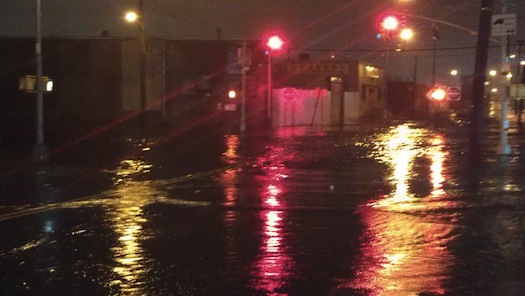


Clouds are a lot like Baskin-Robbins. They’re timeless, can be found all over America, and come in 31 flavors. And induce nostalgia.
Yes, there are 31 species of clouds—yes, they’re called species, just like plants and animals—in the new International Cloud Atlas. Bonus: there are also five new “supplementary features” recognized plus five “special clouds,” including the beautifully named flammagenitus, which sounds less like a localized collection of air moisture formed near wildfires and more like a wildly painful STD. And there’s a new accessory cloud, the flumen, which I can only assume is a small storage unit from Ikea (it’s actually a long, flat cloud associated with severe storms). But the pièce de résistance is the single new species: the volutus. Long, round, and rotating, in motion they look a bit like cloud hot dogs roasting on a spit. Only prettier.
Amusing as cloud names are, categorizing them is serious business. The World Meteorological Organization, a subsection of the United Nations, has spent years collecting data from around the world to put together the newest edition of the Atlas. And it’s not just a fun resource to look at lots of pretty cloud pictures—it’s also a reference tool. They’ve basically compiled a massive database of every cloud type along with key information about each image, such that professional cloud observers (yes, that’s a real thing) have an up-to-date source to reference.
It’s been published periodically since 1896, when it was an impressive feat just to have color photographs of the clouds, much less understand complex atmospheric science. Today we know far more about how clouds form and what weather they portend, so our classifications can be more complex. There are 10 overall types called genera, which are divided into different species—31 in all. Those 31 species can be further subdivided into several varieties, which describe the arrangement and visibility of the cloud parts.
So in honor of the 21st-century Cloud Atlas, here are some beautiful cloud pictures (and also some actual information):













For more amazing cloud pictures, head over to the International Cloud Atlas image gallery.
![Where Do Blizzards Come From? [Vintage Infographic]](https://www.popsci.com/wp-content/uploads/2019/03/18/KYW4YZHLPHFSRWJIWS37JBCOFE.jpg?quality=85&w=540)






![All Of America’s Waterways On One Map [Infographic]](https://www.popsci.com/wp-content/uploads/2019/03/18/LKYQCZ3FKKAEA2YLVD3DWXIRRE.jpg?quality=85&w=800)





